Exploring the Evidence and Misconceptions
The question of whether Lyme disease can cause autism spectrum disorder (ASD) has garnered considerable public interest and scientific scrutiny. While some hypotheses suggest potential pathways through which tick-borne infections might influence neurodevelopment, current research indicates that there is no conclusive evidence establishing a direct causal link. This article delves into the symptoms, diagnosis, and treatment of Lyme disease, examines overlaps with autism symptoms, discusses scientific studies and hypotheses, and clarifies common misconceptions to provide a comprehensive understanding of this complex issue.
Understanding Lyme Disease: Symptoms, Diagnosis, and Treatment
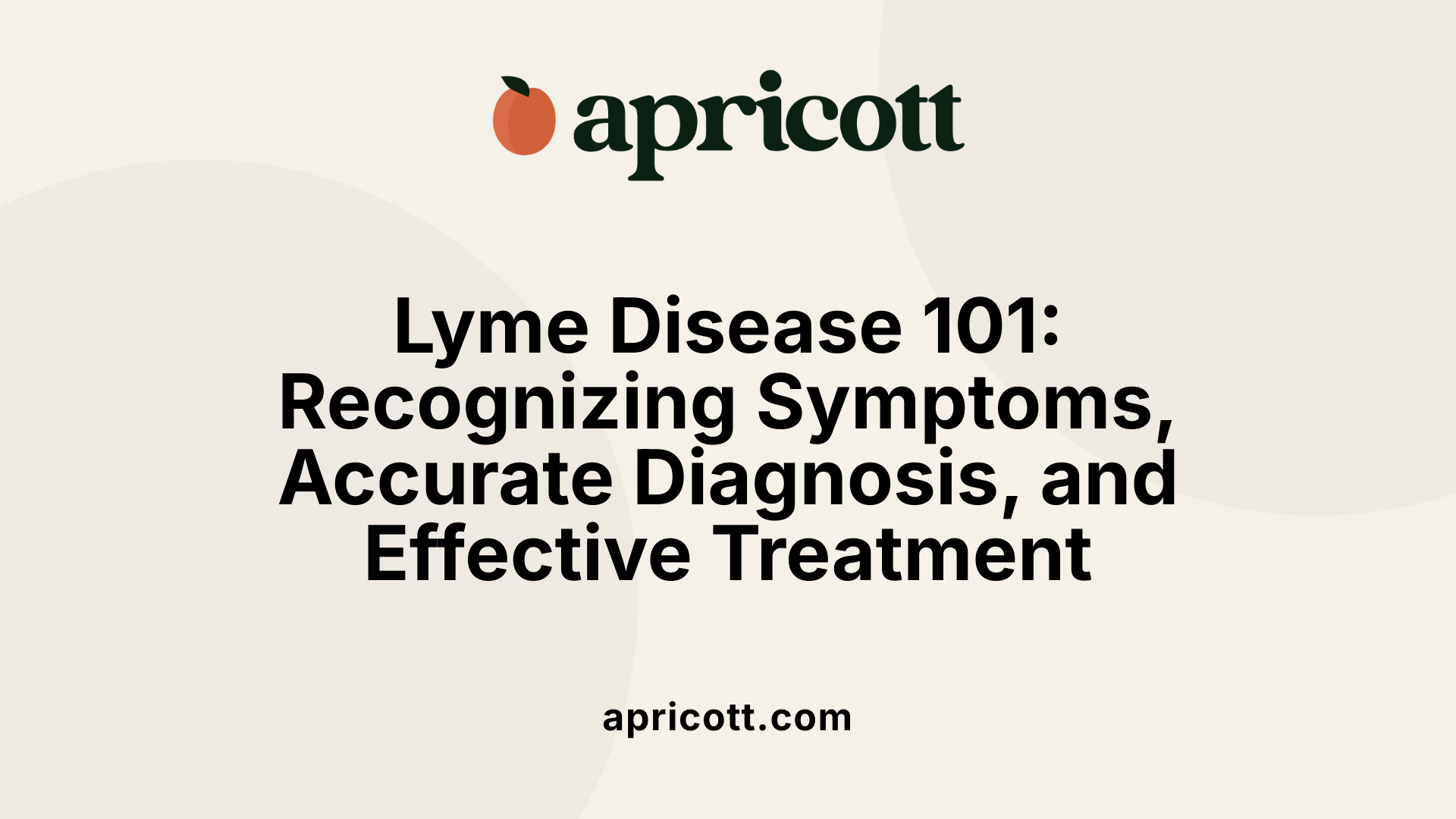
What are the symptoms, diagnosis, and treatment considerations related to Lyme disease and how they may relate to autism?
Lyme disease is caused by the bacteria Borrelia burgdorferi, which is usually transmitted through the bites of infected deer ticks. Early symptoms of Lyme disease often include a characteristic skin rash called erythema migrans, resembling a bull’s-eye, along with flu-like symptoms such as fever, headache, fatigue, and joint pains. These initial signs can sometimes be subtle or resemble other illnesses, which makes early detection challenging.
Diagnosis of Lyme disease generally involves a combination of clinical evaluation, considering recent exposure to tick habitats, and blood tests. The primary laboratory tests used are the ELISA (Enzyme-Linked Immunosorbent Assay) and the Western blot test, which detect antibodies against Borrelia burgdorferi. However, these tests have limitations, especially if performed early in the infection when antibodies may not yet be present. As a result, many cases are diagnosed based on clinical symptoms and exposure history.
Treatment of Lyme disease typically involves antibiotics, with doxycycline and amoxicillin being common choices. The duration of treatment depends on the stage of the disease; early treatment often leads to complete recovery. Despite successful treatment, some individuals may experience lingering symptoms, such as fatigue or joint pain, a condition known as post-treatment Lyme disease syndrome.
Regarding potential links to autism, current scientific evidence does not support a direct connection between Lyme disease and autism spectrum disorder. While some studies suggest that a subset of children with ASD exhibit evidence of Borrelia burgdorferi infection and co-infections like Mycoplasma, these findings are preliminary. The presence of these microorganisms may contribute to neurological or immune system alterations, but more research is needed to clarify their role or impact.
Overall, understanding Lyme disease’s symptoms, diagnosis, and treatment is crucial for early intervention. Although controversial claims have suggested a link to autism, comprehensive studies have not confirmed such a relationship. The focus remains on accurate diagnosis and effective antibiotic treatment to prevent long-term health complications, regardless of any possible connections to neurodevelopmental disorders.
Clarifying Misconceptions: Does Lyme Disease Cause Autism?
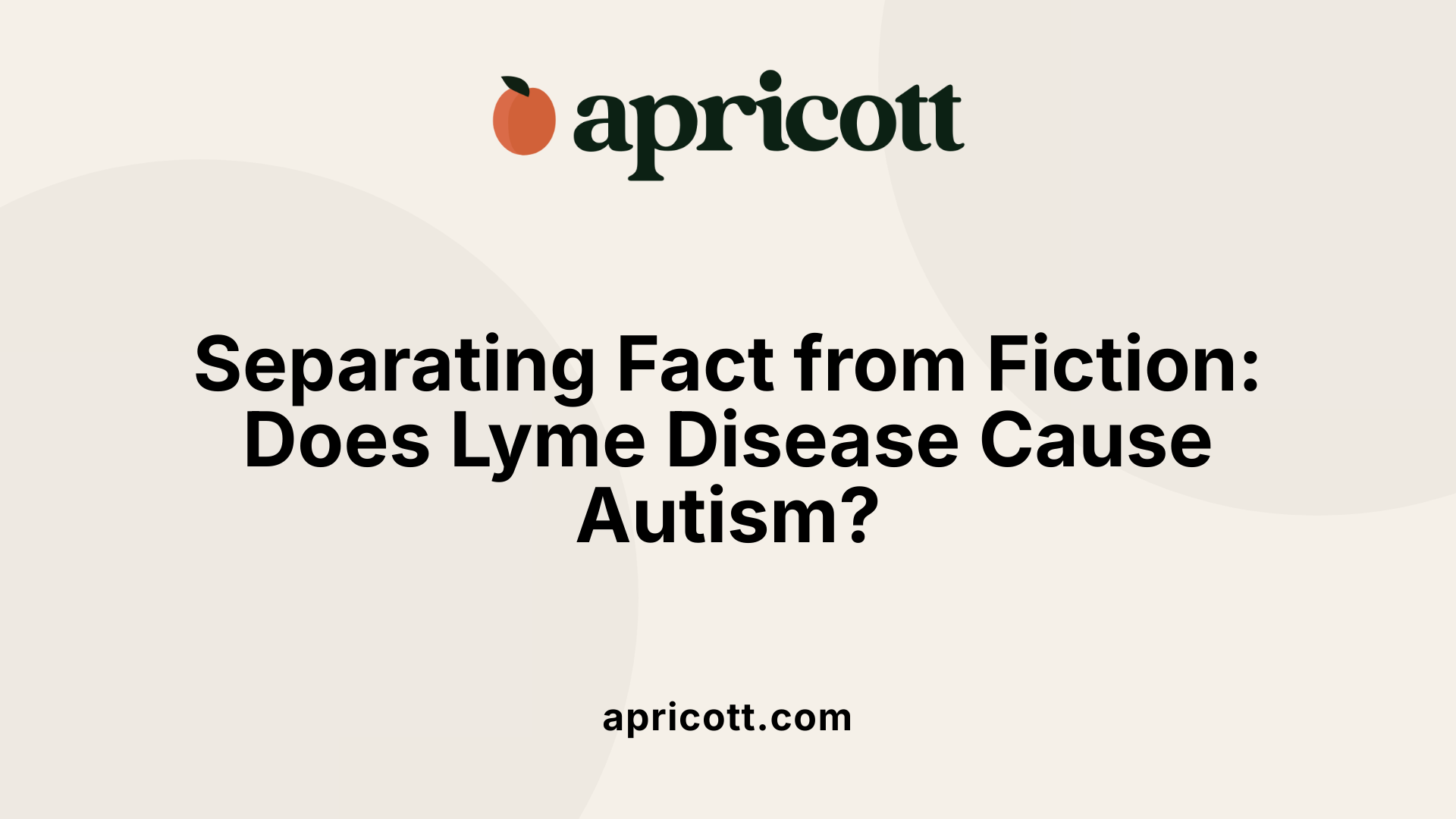
What misconceptions exist regarding Lyme disease's impact on autism spectrum disorder?
A common misconception is that Lyme disease directly causes autism spectrum disorder (ASD). This idea has circulated partly because some symptoms associated with Lyme disease, such as developmental delays, sensory sensitivities, and neurological issues, overlap with those seen in ASD.
However, scientific studies do not support a direct causal link between Lyme disease and autism. While Lyme disease, caused by the bacteria Borrelia burgdorferi, and other tick-borne illnesses like Bartonella, can produce neurological symptoms and immune responses, these are not classified as causes of ASD.
Some researchers suggest that undiagnosed or untreated Lyme disease may temporarily mimic ASD symptoms or complicate existing developmental issues. For example, infections such as Borrelia and co-infections like Mycoplasma have been found to be present in a subset of children with ASD, with some estimates indicating that about 20-30% of ASD cases might involve Lyme-related infections.
Clinical observations have documented mothers with Lyme disease whose children later developed ASD symptoms. In some cases, children with ASD have shown worsening of behavioral symptoms during active infections, which led to speculation about a connection.
Despite these associations, the current consensus remains that Lyme disease is not a cause of autism. The overlap in symptoms can lead to misdiagnosis, where infections are mistaken for ASD or vice versa. Therefore, accurate diagnosis and thorough differential assessments are essential.
Healthcare providers are encouraged to consider the possibility of tick-borne infections in children presenting with neurological or developmental symptoms indicative of ASD. Proper testing, such as the CDC-recommended serological assessments, helps differentiate between infections and neurodevelopmental disorders.
In sum, while infections from ticks like Lyme disease can impact neurological health and may influence existing ASD symptoms, the scientific evidence robustly indicates that Lyme disease does not cause ASD. Emphasizing accurate diagnosis helps ensure appropriate treatment for infections without wrongly attributing the condition to Lyme disease or other tick-borne illnesses.
Examining Overlaps: Symptoms, Co-morbidities, and Diagnostic Challenges
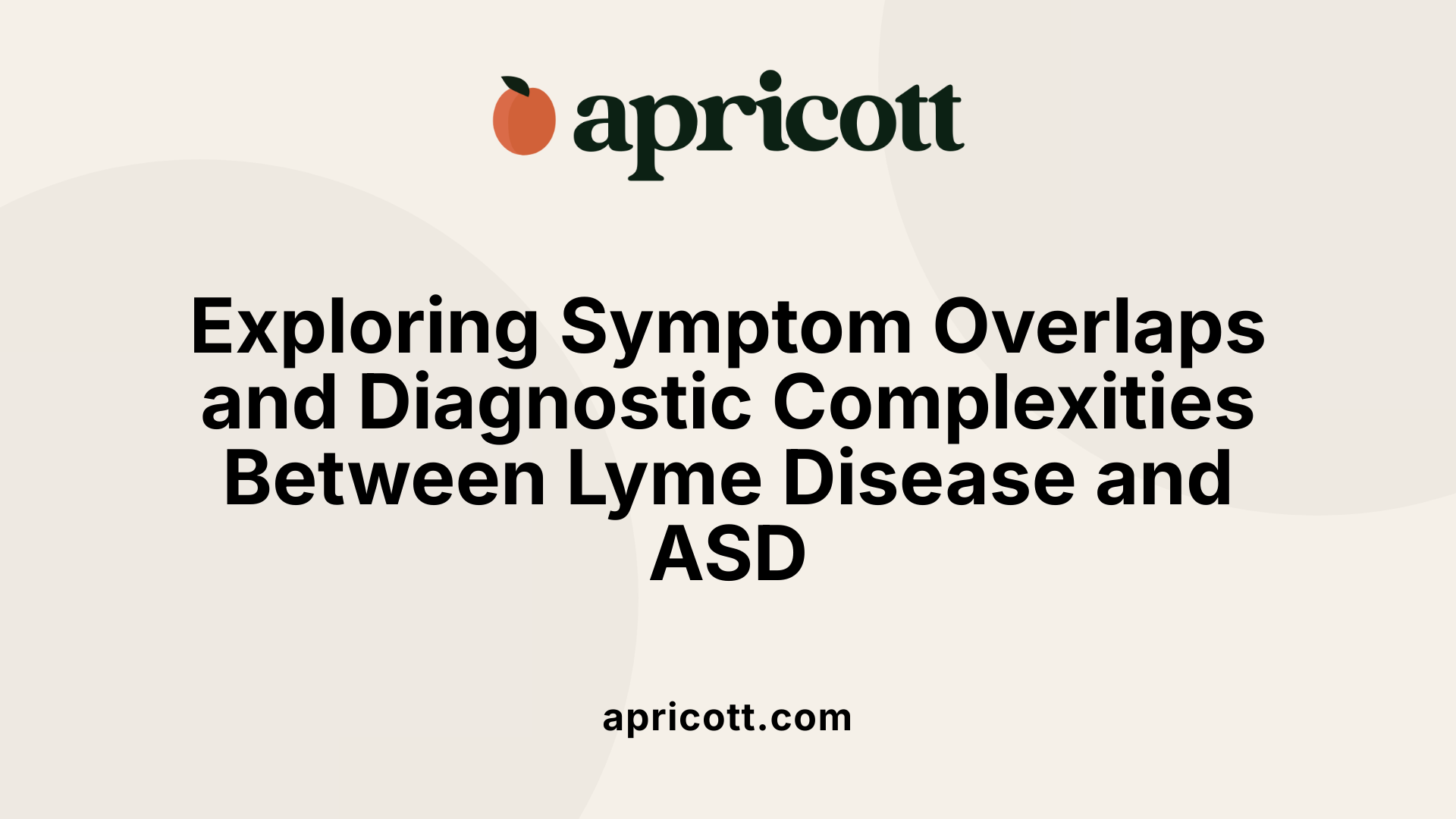
Do Lyme disease and autism spectrum disorder (ASD) share overlapping symptoms or co-morbidities?
There is a notable intersection in symptoms and potential co-occurring conditions between Lyme disease and ASD. Both conditions can involve neurological symptoms such as cognitive delays, sensory sensitivities, behavioral issues, and developmentally related challenges. Children infected with Lyme disease or Bartonella bacteria often show signs that resemble ASD, including speech delays, obsessive or repetitive behaviors, gastrointestinal disturbances, and hyperactivity.
Several physical manifestations associated with Lyme or its co-infections are similar to traits observed in children with autism. For example, some children with Borrelia infection display neurobehavioral changes, neurochemical imbalances, and immune dysregulation that can mimic or exacerbate ASD symptoms. These infections sometimes lead to inflammatory responses in the brain, which may influence neurodevelopment.
The potential impact of maternal Lyme infection during pregnancy is also significant. It has been hypothesized that infection during fetal development might alter neurodevelopmental trajectories, possibly increasing the likelihood of ASD in the offspring. This connection emphasizes the importance of maternal health and infection control during pregnancy.
Diagnostic challenges further complicate distinguishing between ASD and infectious causes. Symptoms of tick-borne illnesses are often nonspecific, making it difficult to identify infections solely through clinical assessment. Standard serological tests, such as the CDC-recommended two-tier Lyme testing, can sometimes be limited in detecting all infections or co-infections, leading to underdiagnosis.
Research indicates that a subset of children diagnosed with ASD may actually have undetected infections like Borrelia or Mycoplasma. Studies show that approximately 20-30% of ASD cases might be linked to Borreliosis, and around 58% exhibit immune responses to Mycoplasma, suggesting infectious agents could contribute to or complicate neurodevelopmental disorders.
In clinical observations, mothers with Lyme disease have reported their children exhibiting autistic symptoms or experiencing symptom worsening during infections, highlighting a potential connection. These findings underscore the importance of considering infectious etiologies in children with autism, particularly when symptoms are atypical or resistant to conventional treatments.
Overall, while symptoms are often nonspecific, the overlap and co-occurrence between Lyme disease and ASD point to the need for comprehensive assessments. Recognizing infectious contributions may improve diagnosis, guide targeted treatments, and ultimately support better outcomes for affected children.
| Aspect | Presentation | Additional Notes |
|---|---|---|
| Overlapping Symptoms | Neurological issues, sensory sensitivities, behavioral changes | Seen in both Lyme and ASD, complicating diagnosis |
| Physical Manifestations | Speech delays, obsessive behaviors, GI issues | Similar presentation in infected children and those with ASD |
| Co-infections | Mycoplasma, Bartonella, Ehrlichia, Babesia | Common in Bb-positive individuals and may influence ASD symptoms |
| Maternal Impact | Pregnancy with Lyme disease | May influence fetal neurodevelopment and risk of ASD |
| Diagnostic Challenges | Nonspecific symptoms, serological test limitations | Calls for advanced testing approaches |
By understanding these overlaps, healthcare providers can better distinguish between infectious and neurodevelopmental causes, ensuring children receive appropriate diagnostics and interventions.
Scientific Insights and Hypotheses in the Controversy
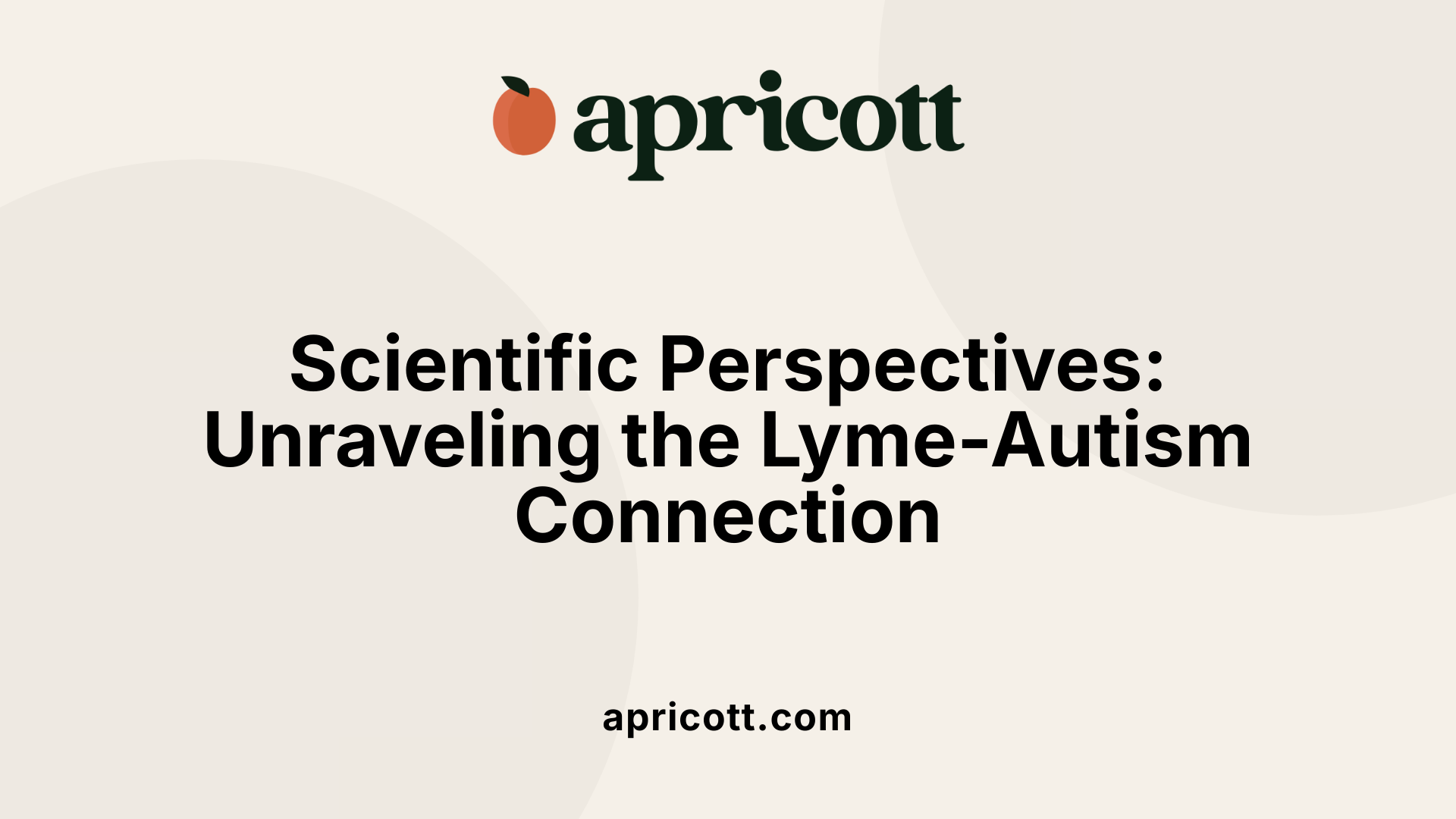
What scientific evidence exists regarding Lyme disease as a cause or contributing factor to autism?
Current research does not definitively prove that Lyme disease causes autism. Nonetheless, there are notable findings pointing to potential links through complex biological mechanisms.
Studies have observed that some children with autism exhibit serological evidence of Borrelia burgdorferi, the bacteria that causes Lyme disease. Approximately 20-30% show reactivity to this pathogen, and a higher percentage (around 58%) display immune responses to Mycoplasma, suggesting possible co-infections.
The hypothesis centers on how chronic infections might influence fetal and early brain development. Evidence points to immune activation and inflammation as critical factors. These immune responses can lead to increased levels of inflammatory molecules that might cross the placental barrier and affect the developing nervous system.
Furthermore, mechanisms like molecular mimicry—where immune responses target both infectious agents and host tissues—may promote autoimmune reactions targeting neural tissue. Oxidative stress and mitochondrial dysfunction are also implicated, disrupting cellular energy production and promoting neurotoxicity.
How do immune reactions relate to ASD and Lyme disease?
The intersection of immune responses in autism and Lyme disease suggests a common pathway involving neuroinflammation. Autoimmune responses and neuroinflammatory processes have been identified in some ASD cases, especially those with a history of tick-borne infections.
Elevated inflammatory markers and neurochemical alterations, such as decreased serotonin and increased quinolinic acid, have been observed. These changes can interfere with neural signaling, synaptic development, and neuroplasticity, contributing to core ASD symptoms like social communication deficits and repetitive behaviors.
Is there evidence that infections during fetal development increase ASD risk?
Indeed, some hypotheses propose that infections like Lyme disease during pregnancy can disrupt fetal brain development. Maternal infection can activate immune responses that lead to neuroinflammation, potentially affecting neurodevelopmental trajectories.
Clinical case reports have documented infants born to mothers with Lyme disease who displayed autistic symptoms later in childhood. In some cases, antibiotic treatment during early development appears to improve outcomes, although definitive evidence remains elusive.
What methods are used in this area of research?
Researchers utilize a combination of diagnostic tools to investigate these links. Serological testing for antibodies against Borrelia burgdorferi and other pathogens helps identify past or ongoing infections.
DNA PCR techniques detect the presence of bacterial DNA, providing evidence of active infection. Neuroimaging studies, metabonomics (metabolomics), and neurochemical assays help elucidate brain changes associated with infection and ASD.
Case studies involving mothers infected with tick-borne pathogens and their children offer insights into possible transmission and symptom progression. Some reports describe symptom improvements after antibiotic therapy, although controlled trials are needed to confirm efficacy.
What are the current gaps and future directions?
Despite intriguing findings, there remains a significant gap in establishing causality between infections such as Lyme disease and autism. Most studies are preliminary, with limited sample sizes and a lack of longitudinal data.
More comprehensive research is necessary, including large-scale epidemiological studies, controlled clinical trials of antimicrobial treatments, and investigations into immune mechanisms. Understanding whether infections are a cause, a trigger, or a co-contributor to autism is essential for developing effective interventions.
The scientific community calls for further exploration of how infectious agents during critical developmental periods may influence neurodevelopment, aiming to clarify their role in the complex etiology of autism spectrum disorders.
Research, Case Studies, and Expert Opinions: What Do We Know?
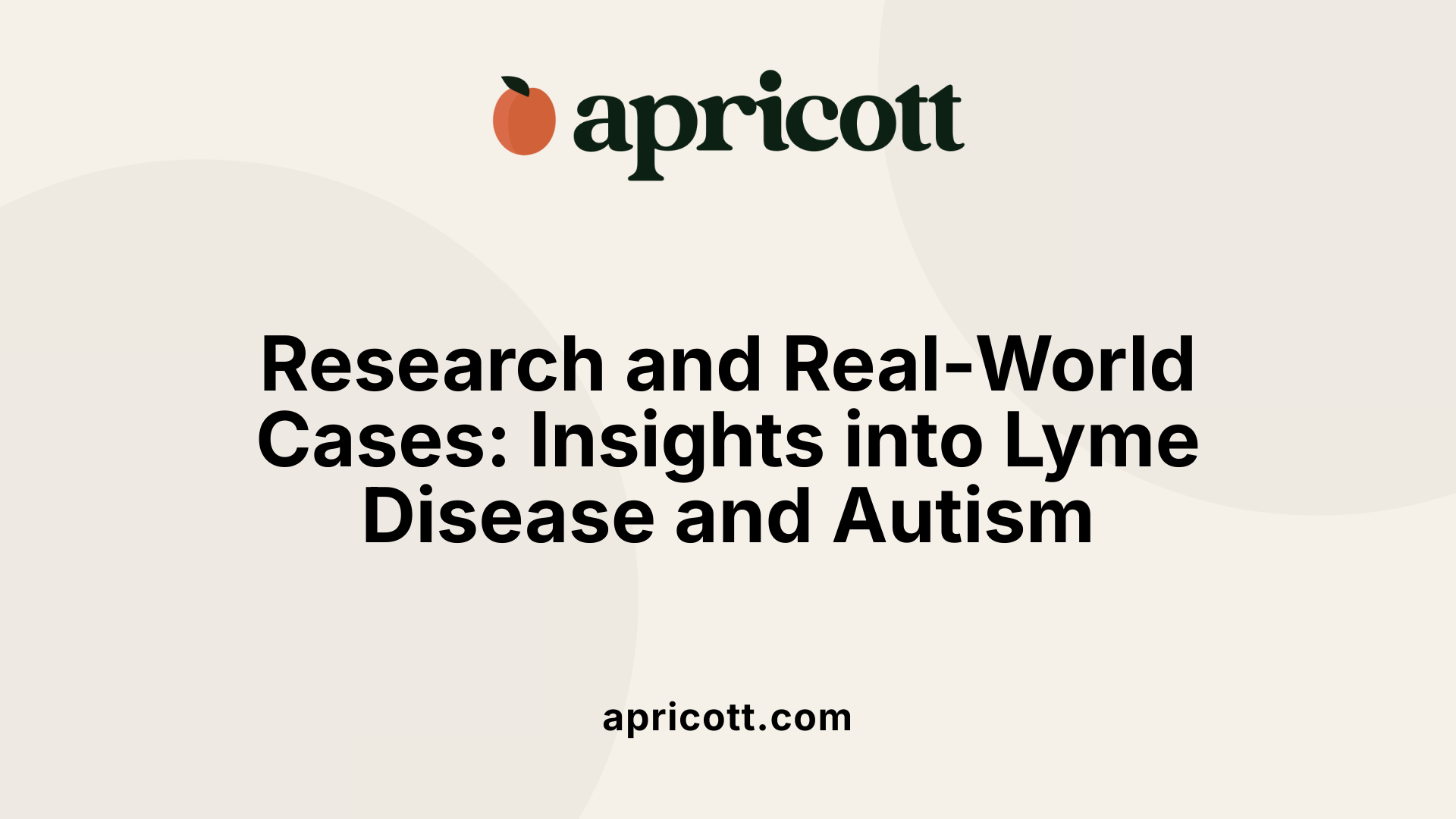
What scientific evidence exists regarding Lyme disease as a cause or contributing factor to autism?
Current research indicates that there is no definitive evidence linking Lyme disease directly to the development of autism spectrum disorder (ASD). Numerous studies employing the 2-tier testing system recommended by the CDC for serological assessment have found no increased seropositivity for Lyme disease among children with autism. This suggests that active Lyme infections are not more prevalent in autistic children compared to neurotypical populations.
However, some insights point towards a possible association involving chronic infections. For instance, studies have observed that approximately 25% of individuals with ASD show evidence of infection with Borrelia burgdorferi, the bacteria responsible for Lyme disease. Moreover, among those with ASD testing positive for Bb, a significant 68% also display evidence of co-infections, including Mycoplasma, Bartonella, Ehrlichia, and Babesia—ailments linked to tick-borne illnesses.
Mechanistically, scientists hypothesize that chronic tick-borne infections might influence neural development. These infections can trigger immune reactions that promote inflammation, oxidative stress, and mitochondrial dysfunction. Processes like molecular mimicry can lead to immune dysregulation, possibly impairing neural pathways fundamental to development.
In some cases, maternal Lyme disease history has been associated with neurodevelopmental issues in children, including autistic traits and behavioral variations. There are also reports where infants infected early in life exhibit autistic symptoms or experience symptom exacerbation following infections, hinting at a possible pathogen-related influence.
Neurochemical and neuroanatomical similarities, such as altered serotonin levels and brain imaging findings akin to those observed in autism, further support the notion of an infectious component influencing neurological outcomes. For example, alterations in neurochemical pathways during fetal development caused by infections may increase the susceptibility to ASD.
Despite these associations, it's important to emphasize that research remains preliminary. The estimated contribution of Borreliosis to ASD ranges around 20-30%, and Mycoplasma infections account for approximately 58%. These figures highlight that infectious agents might play a consequential role in a subset of cases.
Instances of neurological similarities and co-infections reported in some ASD cases
Some studies have identified neurological similarities between ASD and infections stemming from tick-borne illnesses. These include neurochemical imbalances, immune dysregulation, and brain imaging abnormalities. Co-infections are relatively common among ASD patients with markers of Bb positivity.
Clinical observations record cases where mothers with Lyme disease have given birth to children displaying autistic traits. In certain cases, infection exacerbated symptoms, and antibiotic treatments in some children yielded symptom improvements, although further rigorous studies are necessary.
Large studies and serological testing-based investigations
Large-scale investigations utilizing CDC-recommended serological testing have not demonstrated a higher prevalence of Lyme disease in children with ASD. Most findings are based on antibody reactivity studies, which suggest that while some autistic individuals do show immune responses to Borrelia and other tick-borne pathogens, this does not conclusively prove causality.
Overall, while there is intriguing preliminary data and biological plausibility supporting a role for infectious agents like Lyme disease in some autistic cases, current scientific consensus requires more robust, controlled research to confirm any causal relationship. The complex interplay between infections, immune responses, and neural development continues to be a focus of ongoing investigation.
The Current State of Evidence and Moving Forward
While intriguing hypotheses and some preliminary findings suggest that infectious agents like Borrelia burgdorferi could play a role in certain autism cases, the current scientific consensus does not support a direct causal link between Lyme disease and autism. Misconceptions continue to circulate, emphasizing the importance of accurate diagnosis and consideration of co-infections in complex neurodevelopmental presentations. Ongoing research using advanced diagnostic tools and comprehensive case studies is essential to elucidate any potential connections, clarify underlying mechanisms, and inform effective clinical management. Clinicians and caregivers should focus on evidence-based approaches for diagnosing and treating autism and Lyme disease separately, while remaining open to new insights as science progresses.
References
- Autism and Lyme Disease—Reply - PMC
- Is there a connection between autistic spectrum disorders ...
- The association between tick-borne infections, Lyme ...
- Lyme and Autism
- Is there a connection between autistic spectrum disorders ...
- Does Lyme disease induce autism in children
- Is there a connection between autistic spectrum disorders ...
- Serologic Markers of Lyme Disease in Children With Autism
.svg)
.svg)








